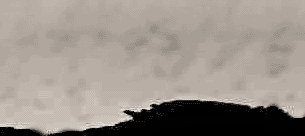




|
The body of the crime.
(it Belongs to the article
the girl's death Cecilia)
When the vault opened up seventy six years later, Ercilio Vento could confirm that the interred minor skeleton, even when it was not in a good preservation state, have all the characteristic of an infant of not more than nine months of age; in other words; it wasn't Cecilia Dalcourt Jaruco death body. Cecilia's body was never found, for what the true element of accusatory test was never contributed." But that afternoon of 1919, the spirits heated up after the supposed discovery of the missing person remains, entered in boil giving appointment to hundreds of people that went from the cemetery like an avalanche of rage to which people join with lit candles while the manifestation traveled the tip city to tip, until arriving at the Castle of San Severino, where was the accused of perpetrating the crime.
A modest noted citizen Ovidio, takes the popular representation and goes of coffee in coffee, propagating the species that the Governor, the Mayor and the other authorities remain impassive before the judge's strange aptitud because they are ' friends of the brujos' publish
The World of Havana, on Tuesday 1ro.
of Julio referring to the journalist of
The Impartial one.
The same newspaper narrates how the manifestation arrived before the walls of the Castle that Sunday night and it claimed that surrenders to the sorcerers.
The soldiers threatened the demonstrators to be dissolved and these they tried to enter for the force in the strength, where they were received by the shots that hurt to several, they killed at two and they contained the others.
"When the hot blood of the town still left its panting print in the flagstones of the entrance of the Castle of San Severino, the shots of the troops alarmed the population again; in one of their corridors applied the sorcerers the Law of Flight" (Weekly publication
The Cartoon.
Havana, Sunday 6 of July) .
"In the Castle of San Severino they have allowed the entrance in groups of at eight to the town to see the sorcerers dead last night.
They have not been able to be transferred to the cemetery the cadavers because more than a thousand people they expect in this place with cans of petroleum with the purpose from burning them.
They said that will be buried by the dawn" (Newspaper of The Marina.
Havana, Tuesday 1 of July) .
"Before this state of the things, the mayor of this city, Mr. Carnot, has requested before the supervisor that the city is given to the Army.
The town is indignant, keeping the order the troops that, militarily taken the square, they patrol the streets", correspondent Pedro Simeón telegraphed to the newspaper
The Fight of Havana, on Tuesday 1ro of Julio.
The events of June of 19919 became a political offensive against mayor Armando Carnot's public administration and against its liberal politics since it was elect in 1916.
Armando Carnot's renouncement still weighs on Matanzas, city that many consider the capital of AfroCuba.
When being emitted the sentence. #74, causes. 306 of the Tribunal of Special Instruction of Matanzas of April of 1920, 12 were declared acquitted by lack of tests at the eight processed, including at the five that you/they had died to the aplicarseles the flight law in the Castle of San Severino. Those 5 cadavers represent the only body of the crime that the evidences of that time have been able to contribute for the trial of the History.
In any Afro-Cuban study perseverance of the sources should be given remitted by the collective memory of the region:
la popular voice keeps perseverance until our days that the girl's parents Cecilia was of skin and black configuration, while the girl was white, too early for her progenitors, and according to the oral tradition, she was in fact the Spanish grocer's non grateful daughter that had her market in
Is said that the grocer scared by the tension in the City, closed his business and return to his born land. It is also said that the grocer kidnapped Cecilia, taking to Spain the fruit of his illicit loves and the apple of the racial discord that it unchained the persecution of the Sorcerers San Juan's night.
MENTIONED SOURCES
- Ortiz, Fernando, 1906. The Black Sorcerers. The Brand, June of 1919, 30 Havana, Cuba.
- Helg, Season, 1995.
Our Rightful Share (The African-American-Cuban Struggle for Equality, 1886-1912).
The University of North Carolina Press.
|






